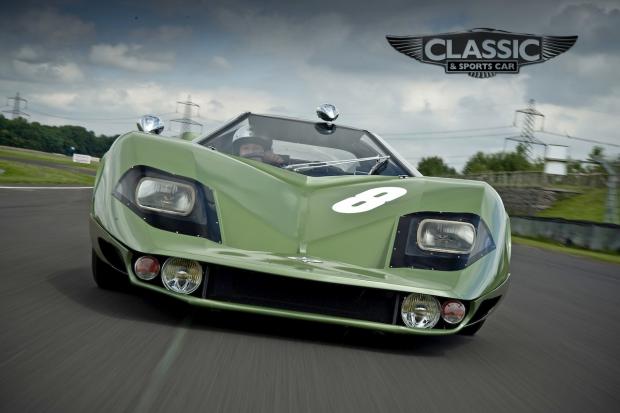Everything looked rosy until things kicked off in France. With civil unrest rife across the country, the 36th Grand Prix of Endurance was postponed from its traditional June slot to mid-September. By then, the Marcos Mantis XP was on the other side of the world. The car had raced, just once, at Spa-Francorchamps in May. It had a good turn of pace but, in torrential Ardennes rain, the cabin quickly began to fill up. The car came in and holes were cut in the floor to let the water out, and, having restarted at the back of the field, by lap 10 the XP had climbed to 21st of the 38 runners. Eddie Nelson’s spin at La Source pushed it back five places, but two were regained before the Marcos hit a major problem. The alternator, slung out of the back of the car as was the norm with mid-engined racers, was sodden and there was a major misfire. Desperate to preserve the engine, Jem Marsh called a halt after 13 laps and the team went home: “We didn’t have the money to risk blowing up an F1 engine and it had been a pretty miserable weekend so we called it a day. The car went very well and the chassis was excellent, but I wasn’t even meant to be driving – someone pulled out at the last moment and we took out all the upholstery so I could squeeze in. There I was in this horrible weather, in a car I’d never driven in vengeance, not able to see a bloody thing in the rain, head cocked to one side because I didn’t fit in the car which was built around Peter Adams, a GP engine up my backside, sitting on the floor in a puddle of water. I don’t think either Eddie or I was too upset at stopping.”

Back in the UK, the Repco was replaced with a Buick V8 “that was lying around” – the engine the Rover unit was derived from in the first place – and Marsh took to driving the car on the street: “The old ladies of Bradford-on-Avon thought it was something from another planet. It was quite enjoyable really.” Then the trouble started. Because the Mantis was being run on the road, Her Majesty’s Customs and Excise started demanding that Marsh pay Purchase Tax on it. A lot of Purchase Tax. “They put their own huge value on the car and based it on that,” says Marsh. “It would have been a vast amount of money to us and the only way to avoid paying was to export it. I had a contact in America, so off it went.”

The XP appeared at a couple of shows before it was snapped up. Then things went quiet for a very long time. Contrary to popular belief, however, the Marcos didn’t disappear into a private collection or museum. Californian enthusiast Tom Morris and his family saw the XP at the LA Auto Show in 1970 and had to have it. A crucial part of the deal was that he could drive it on the roads, so when Morris bought the Mantis he insisted on meeting the seller at the local licensing office and only handed over his money (memories are hazy, but it was between $5000 and $7500) when he got the papers that made the Marcos street-legal. The XP has been with the family ever since, ownership passing to the four sons – Ned, Chris, Pat and Drew – in 1986. They endeavoured to keep it on the road so, when emissions controls reached their height, the family re-registered the car where Ned was studying so that it could continue to be run as LA’s ever more stringent smog laws came in.











